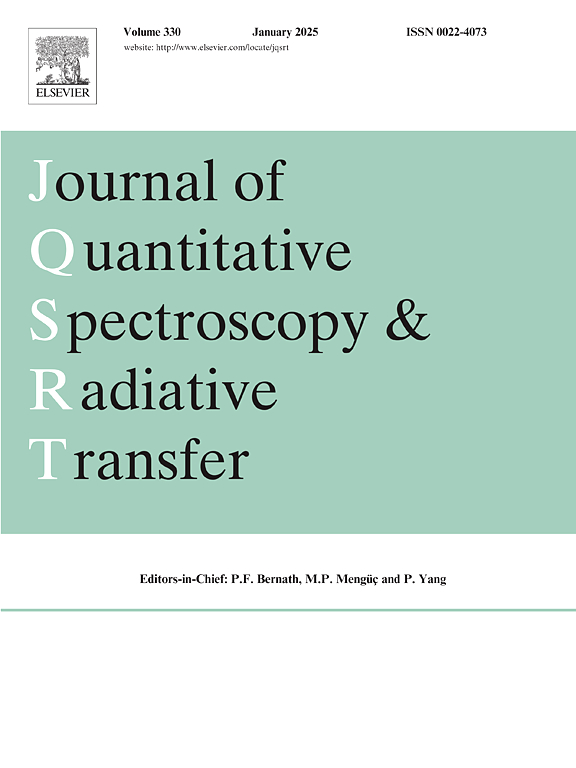大气翼面太阳辐射散射观测反演臭氧数密度曲线的直接反演方法
IF 2.3
3区 物理与天体物理
Q2 OPTICS
Journal of Quantitative Spectroscopy & Radiative Transfer
Pub Date : 2025-03-19
DOI:10.1016/j.jqsrt.2025.109426
引用次数: 0
摘要
空间仪器的大气探测通常会导致解决一些反问题,以获取特定成分(如臭氧)的垂直数字密度剖面。本文开始考虑迭代处理大量观测集合所必需的正演模型调用的总数。对于可比的计算工作,为状态向量和测量向量空间生成大量合成情况和相关主成分的集合可能是有用的。然后,通过人工神经网络进行非线性回归,得到直接逆映射。该反演算子精度高,对噪声具有较强的鲁棒性。将该方法应用于OMPS-LP肢体数据,并与其他两种已发表的检索算法进行性能比较。这种相互比较对于一个月的数据来说是有统计学意义的。用蒙特卡罗方法估计测量误差,用两种不同的方法计算平均核。本文章由计算机程序翻译,如有差异,请以英文原文为准。
Direct inversion method for the retrieval of ozone number density profiles from observations of solar radiation scattering by the atmospheric limb
Atmospheric sounding from a space instrument usually leads to solving some inverse problem to retrieve a vertical number density profile of a particular constituent like ozone. The paper starts to consider the total number of calls to the forward model that are necessary to iteratively process a large ensemble of observations. For a comparable computational effort, it can be useful to generate a large ensemble of synthetic cases and the associated principal components for both state vector and measurement vector spaces. Then, a direct inverse mapping is obtained by a nonlinear regression through an artificial neural network. The inversion operator is accurate and robust to noise. A test bench is to apply this direct method to the OMPS-LP limb data and to compare the performances with two other published retrieval algorithms. The inter-comparison turns out to be statistically meaningful for a full month of data. Measurement errors are estimated by a Monte-Carlo approach, and averaging kernels are computed with two different methods.
求助全文
通过发布文献求助,成功后即可免费获取论文全文。
去求助
来源期刊
CiteScore
5.30
自引率
21.70%
发文量
273
审稿时长
58 days
期刊介绍:
Papers with the following subject areas are suitable for publication in the Journal of Quantitative Spectroscopy and Radiative Transfer:
- Theoretical and experimental aspects of the spectra of atoms, molecules, ions, and plasmas.
- Spectral lineshape studies including models and computational algorithms.
- Atmospheric spectroscopy.
- Theoretical and experimental aspects of light scattering.
- Application of light scattering in particle characterization and remote sensing.
- Application of light scattering in biological sciences and medicine.
- Radiative transfer in absorbing, emitting, and scattering media.
- Radiative transfer in stochastic media.

 求助内容:
求助内容: 应助结果提醒方式:
应助结果提醒方式:


